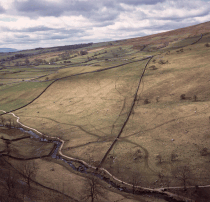Cliff Andrade is a Communication Design graduate from Glasgow School of Art. Here he tells us about making his The Last Days of Art School documentary where he followed Design students through their final week of study before their Degree Show in 2014. The video below contains strong language.
The Last Days of Art School came about in quite chaotic circumstances. With just over a week to go before the final degree submission deadline my tutor suggested that it might be a good idea for me to produce another piece of work for my submission portfolio. At first I thought he wasn’t serious; but he was.
My major project was photographic, so I thought a contrast to that would be good. I had dabbled in film on and off over my degree and it was actually his preference that I make a film. In a week! Normally I ponder, deliberate and procrastinate quite a bit, but there was no time so a film it was, and a film about what was going on all around me was the obvious/only choice. I did briefly worry that it might not be that interesting, but little was I to know about the events that were about to strike the Art School.
Looking back I think the time pressure really helped, as I couldn’t afford to worry too much about what I was doing, I just had to go and do it. The structure of the film – the fact that there is no synced sound i.e. that what is being said does not match what you see, is the direct result of the technical restraints I encountered. It was just impossible for one person to film and record usable sound at the same time. I’d go in the morning and shoot for a couple of hours, record sound for an hour, edit for a couple, then shoot for a couple more in the afternoon, more sound and then edit again into the night. As I would be shooting right up until hand-in day, there was no time to edit after all the shooting was complete – I had to edit as I went. So the structure of the film developed as it went, one day at a time. Once one day was done that was it. There was no going back. And no knowing what would come next.
As well as this there was the ordering of frames for the degree show, the finishing of the making of my photobook (my main project), the incessant palaver of trying to book time on the digital photo printers, all to be done. I’d managed to get the bulk of the book done and kicked the frames off before the film started, so that was a massive help. Luckily, and I mean that sincerely, I hit no major snags in any of this which meant I was able to get those things underway as planned and complete the film on time. Not everyone had such a relatively smooth ride.
The other benefit of this was that I couldn’t really worry about the show and what was coming. There was no time. And then once we hit the deadline it’s all out of your hands and you can’t worry anymore. Then it’s the fun bit – putting up the work and stepping back and letting it exist for others to see. Apart from the actual putting up of the work which inevitably ends up with 50 people chasing one screwdriver round a gallery space. After that though, step back and relax.
For anyone about to go through this experience, I would offer some words of advice which may or may not help. It sounds obvious but the first thing is to plan what you need to do in advance. Write all the steps down and don’t underplay anything. Think realistically about how long things are going to take. One mistake we made early on is to think, ‘oh, I need to print X number of A3 prints, that should only take a morning’. It may well only take a morning under normal circumstances, but if you have 20 people trying to do the same thing on one printer, it could well end up taking the best part of a week. So plan early, talk to the other people who are likely to be in that queue with you (you quickly find out who they are) and negotiate and plan with them. And most importantly, figure out how long something will realistically take, and then double it. This is especially true of anything involving technology. Computers love to through up errors, printers love to throw a strop and refuse to print and exporting a film from an edit is never incident free. The second thing I would suggest is make sure you have access to your own spirit level, drill and screws – this will make the hang a lot less stressful.
To read more from Cliff and see some of his photography, check out his Life After Art School feature on Central Station.
//////
Looking for more blogs? Visit here.














Comments